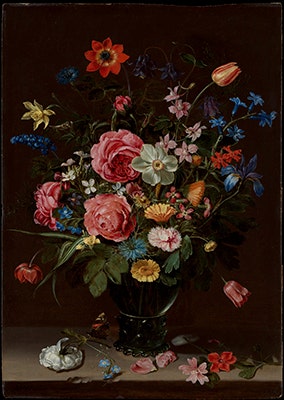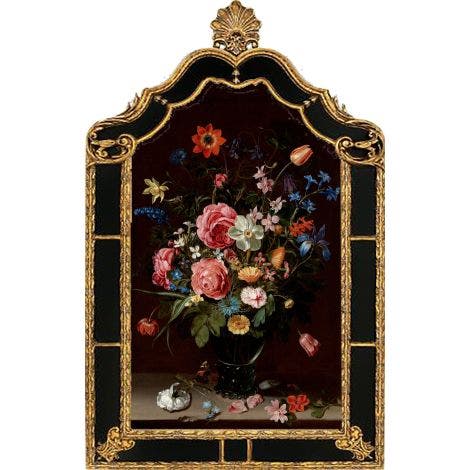Local Storage seems to be disabled in your browser.
For the best experience on our site, be sure to turn on Local Storage in your browser.
Regal Flemish Still Life

Our Inspiration:A Bouquet of Flowers
Clara Peeters (Flemish, ca. 1587–after 1636)
Oil on wood, 18 1/8 x 12 5/8 in., ca. 1612
Purchase, Lila Acheson Wallace, Howard S. and Nancy Marks, Friends of European Paintings, and Mr. and Mrs. J. Tomilson Hill Gifts, Gift of Humanities Fund Inc., by exchange, Henry and Lucy Moses Fund Inc. Gift, and funds from various donors, 2020 2020.22
Peeters was a founding figure in the history of European still life, a genre that attracted many women artists who did not have the opportunity to study nude models. In this ambitious composition, Peeters paid close attention to naturalistic details like dewdrops, insect bites, and drooping tulips that hint at transience and decay. Her work reveals the close link between floral painting and botanical illustration during the Scientific Revolution.

Our Inspiration:A Bouquet of Flowers
Clara Peeters (Flemish, ca. 1587–after 1636)
Oil on wood, 18 1/8 x 12 5/8 in., ca. 1612
Purchase, Lila Acheson Wallace, Howard S. and Nancy Marks, Friends of European Paintings, and Mr. and Mrs. J. Tomilson Hill Gifts, Gift of Humanities Fund Inc., by exchange, Henry and Lucy Moses Fund Inc. Gift, and funds from various donors, 2020 2020.22
Peeters was a founding figure in the history of European still life, a genre that attracted many women artists who did not have the opportunity to study nude models. In this ambitious composition, Peeters paid close attention to naturalistic details like dewdrops, insect bites, and drooping tulips that hint at transience and decay. Her work reveals the close link between floral painting and botanical illustration during the Scientific Revolution.


